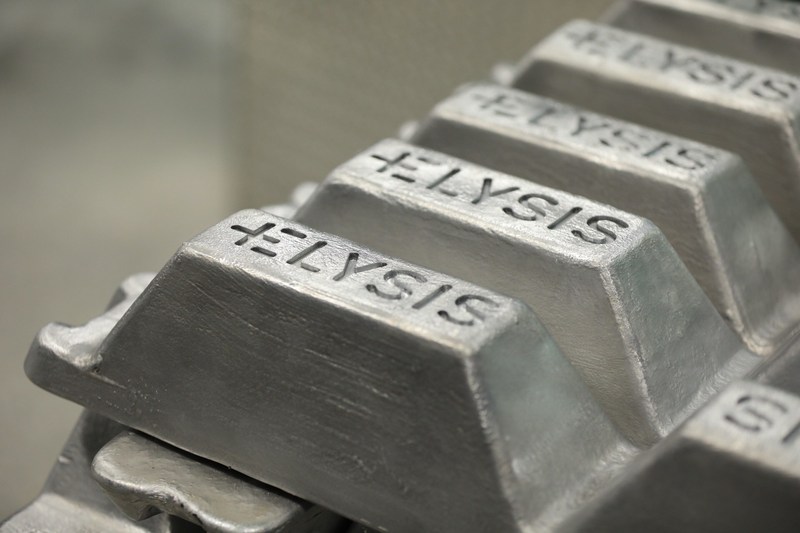
Major breakthrough: Carbon-free aluminum smelting to be commercialized in Quebec
by The Canadian Press, with files from Canadian Manufacturing.com Staff

Metals firms Alcoa Inc. and Rio Tinto Group are teaming up with tech giant Apple and the Quebec and federal governments to commercialize a process that eliminates harmful emissions from smelting by instead producing oxygen

The innovative process replaces all direct greenhouse gas emissions from the aluminium smelting process with oxygen. PHOTO: Rio Tinto Group
SAGUENAY, Que.—The federal and Quebec governments are teaming up with a trio of corporate giants from the metals and tech industries to commercialize the world’s first carbon-free aluminum smelting process.
Ottawa, Quebec and Apple Inc. are investing in a joint venture between Alcoa Inc. and Rio Tinto Group called Elysis, which will commercialize a process that eliminates greenhouse gas emissions from traditional smelting by instead producing oxygen.
Elysis, which expects large-scale deployment of the technology by 2024, will be given a total of $188 million from Alcoa, Rio Tinto, Ottawa, Quebec and Apple to develop and license the technology so it can be used to retrofit smelters or build new facilities.
The patent-protected technology, developed by Alcoa, is currently producing metal at the Alcoa Technical Center, near Pittsburgh, Pa., where the process has been operating at different scales since 2009.
“This discovery has been a long-sought goal for the aluminium industry, and this announcement is the culmination of the work from many dedicated Alcoa employees. Today, our history of innovation continues as we take aluminium’s sustainable advantage to a new level with the potential to improve the carbon footprint of a range of products from cars to consumer electronics,” said Alcoa president and CEO Roy Harvey in a statement.
Rio Tinto said in a statement the technology could eliminate the equivalent of 6.5 million metric tonnes of greenhouse gas emissions in Canada, if fully implemented at existing aluminium smelters in the country. That represents an amount roughly equal to taking nearly 1.8 million light-duty vehicles off the road.
“It (the technology) builds on the key role aluminium has to play in driving human progress, by making products infinitely recyclable, stronger, lighter and more fuel efficient,” said Rio Tinto chief executive J-S Jacques.
Alcoa and Rio Tinto will invest $55 million in the project over the next three years and contribute specific intellectual property and patents.
The federal and Quebec governments are contributing $60 million each, with the Quebec government getting a 3.5 per cent stake in the venture and Alcoa and Rio Tinto splitting the remaining ownership equally.
“Our investment will play a key role in the large scale development of this carbon-free aluminium smelting technology, so it can be deployed and deliver significant environmental benefits with well paid, highly skilled jobs here in Quebec,” said Quebec Premier Philippe Couillard.
The project is expected to directly employ 100 people, but the Prime Minister’s Office said in a statement it has the potential to create more than 1,000 jobs by 2030, while securing 10,500 existing aluminum jobs in Canada.
Prime Minister Trudeau expressed his enthusiasm for the project: “it is a truly historic day for the aluminium industry.”
Apple, which put forth $13 million, helped facilitate the collaboration between Alcoa and Rio Tinto and has vowed to provide technical support as the project progresses.
“We are proud to be part of this ambitious new project, and look forward to one day being able to use aluminium produced without direct greenhouse gas emissions in the manufacturing of our products,” said Apple CEO Tim Cook.
Elysis will have a headquarters in Montreal and a research facility in the Saguenay-Lac-Saint-Jean, Que. region.